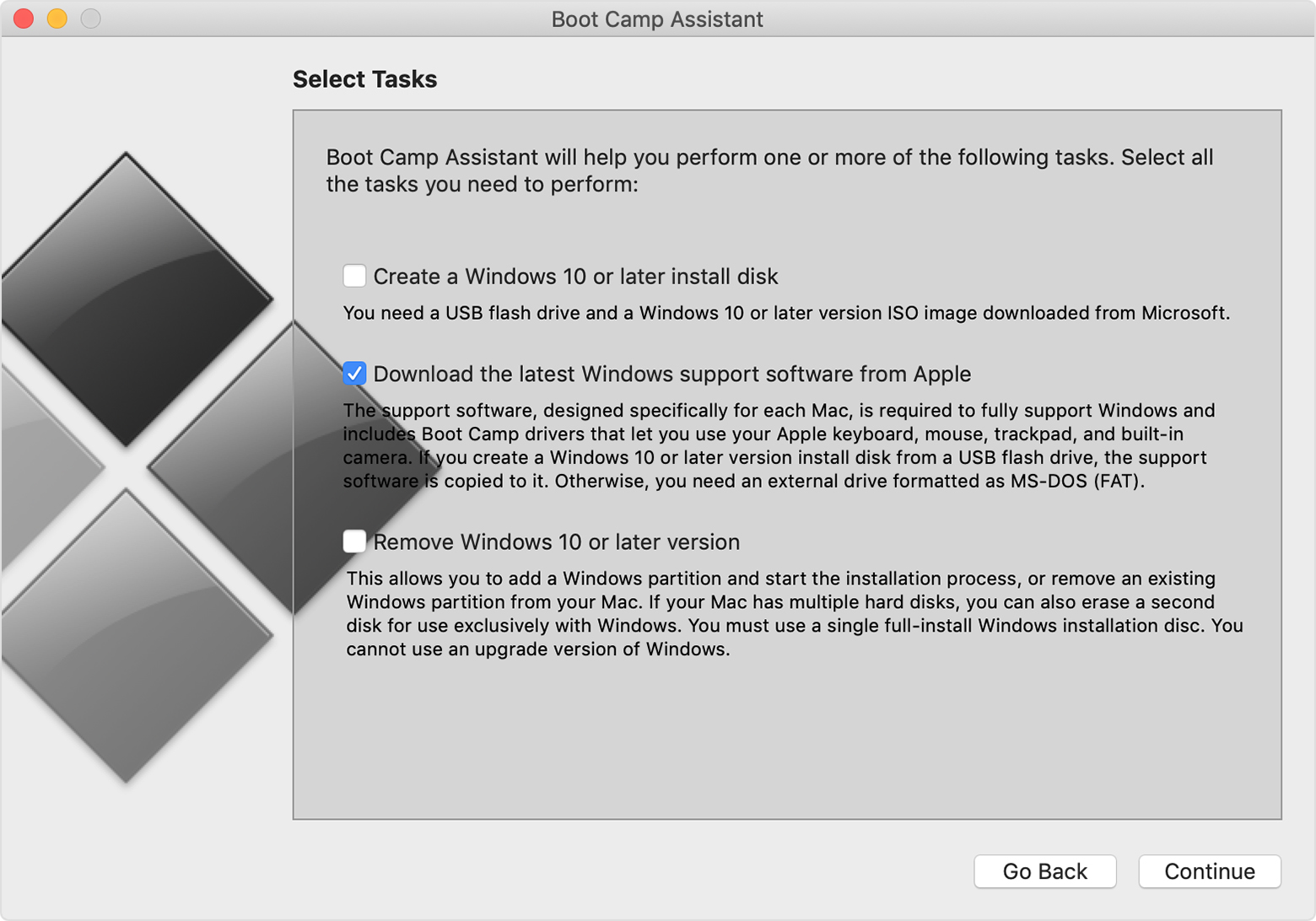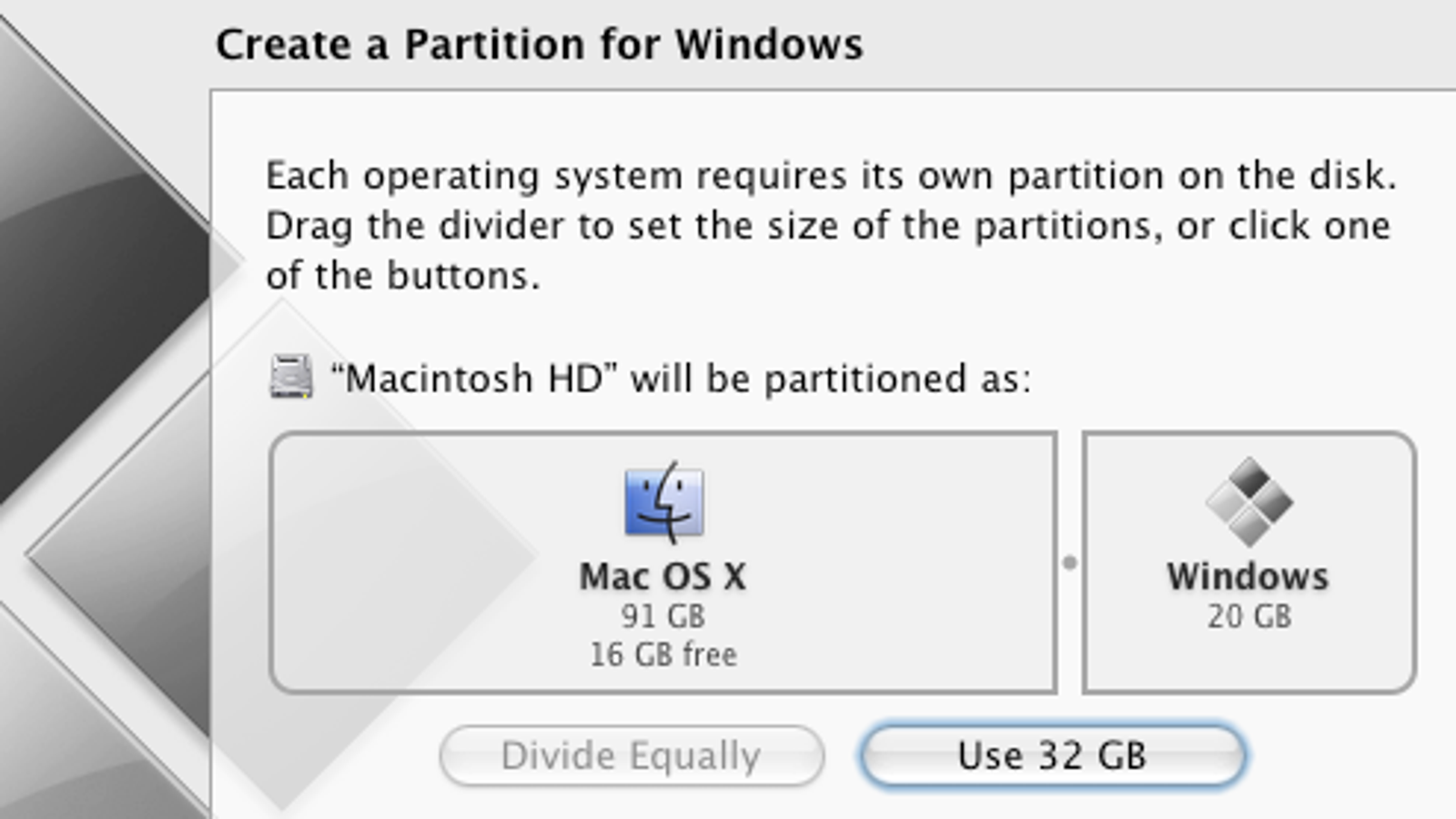

- #Windows 10 boot camp for mac how to#
- #Windows 10 boot camp for mac update#
- #Windows 10 boot camp for mac upgrade#
It is possible to upgrade Windows 7 or Windows 8.1 to Windows 10, but we recommend starting from scratch. MacBook Pro (Retina, 13-inch, Late 2012).MacBook Pro (Retina, 13-inch, Early 2013).MacBook Pro (Retina, 15-inch, Early 2013).MacBook Pro (Retina, 13-inch, Late 2013).MacBook Pro (Retina, 15-inch, Late 2013).MacBook Pro (Retina, 13-inch, Mid 2014).MacBook Pro (Retina, 15-inch, Mid 2014).MacBook Pro (Retina, 13-inch, Early 2015).


Here is the full list of Macs that support Windows 10:
#Windows 10 boot camp for mac update#
The update is currently rolling out to OS X 10.10 Yosemite users - if you haven’t seen it yet, use the Mac App Store to check for updates. Note: The System Preparation Tool can be found at C:\Windows\System32\Sysprep\sysprep, which is shown below.The updated Boot Camp 6 also includes support for the following features: USB 3, USB-C on the MacBook (Retina, 12-inch, Early 2015), Thunderbolt, built-in SD or SDXC card slot, built-in or USB Apple SuperDrive, Apple keyboard, trackpad, and mouse. The "Window instance" is removed, but your changes will remain. When you wish to leave Audit mode and finish the Windows installation, set System Preparation Tool as shown below, then select the OK button. The installer provided by Apple may appear automatically or manually executed by running the Setup application in the BootCamp folder on the flash drive. You now can configure your Windows installation, which can include installing Boot Camp and other Windows software provided by Apple. You should eventually see a desktop similar to what is shown below. You will enter Audit mode, which can take some time to complete on older Macs. When you reach the screen shown below, enter the key combination control+ shift+ F3. You can create "an already running Window instance" before you reach the point where you are having network problems. This is what I mean when I say that I can boot into Windows 10, but that the initialization of that OS fails due to the inability to access the network. My only option at that point is to reboot into MacOS.

No option to correct this is offered, and there is nothing I can click on or enter, and my machine is essentially frozen. Then, the software continues with the Windows initialization process and eventually gets to a black screen upon which a message comes out saying that there is no network, and that it cannot continue. PS: To be clear, after first booting into Windows 10, I am prompted for things like what country I'm in, what language I am using, what keyboard I want to use, etc. How can I get my bootcamp-based Windows 10 to see the network, so its initialization can complete? I have no trouble accessing the network when running on the same machine under MacOS.
#Windows 10 boot camp for mac how to#
This means that I can't follow the instructions that I have found on line about how to correct network problems after starting Windows via bootcamp. Therefore, the Windows 10 initialization fails and cannot complete, and so I have never been able to actually start up Windows 10. Part way through that, it tries to go to the network, and it can't find the network. when first booting into Windows 10, the Windows 10 installation/startup code is run. After a long process, my device can now boot either in Windows or MacOS. I followed all the steps, including the installation of the Windows support software. I have a MacBook Pro, retina, mid-2014 device, I am trying to get Windows 10 working in Bootcamp under Big Sur.


 0 kommentar(er)
0 kommentar(er)
